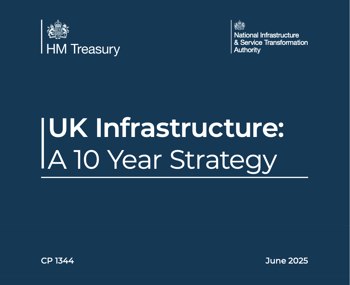Elevate Your Projects with Advanced Drone Mapping Solutions
Drone mapping involves using unmanned aerial vehicles (UAVs) equipped with high-resolution cameras and sensors to capture detailed images and data from above. This technology provides a comprehensive overview of landscapes, structures, and infrastructure, transforming how we approach various projects. By leveraging drones, professionals can access accurate, up-to-date information with remarkable efficiency.
Contents |
[edit] Technology Behind Drone Mapping
Drone mapping technology combines advanced UAVs with sophisticated sensors and cameras. Drones are equipped with high-definition cameras that capture aerial imagery, while GPS systems ensure precise location tracking. These components work together to gather extensive data, which is then processed using specialised software to create detailed maps and 3D models.
[edit] Applications of Drone Mapping
Drone mapping finds applications across multiple sectors:
- Construction and Infrastructure: Drones provide real-time progress updates, monitor site conditions, and support planning and design processes.
- Agriculture and Environmental Monitoring: They offer insights into crop health, land usage, and environmental changes, aiding in better decision-making.
- Urban Planning and Development: Drones assist in analysing city layouts, planning new developments, and managing urban growth.
- Real Estate and Property Management: High-resolution aerial imagery enhances property listings, provides site assessments, and supports marketing efforts.
[edit] Advantages of Drone Mapping
The use of drones for mapping offers several advantages:
- High-Resolution Imagery: Drones capture detailed and clear images, allowing for accurate analysis and decision-making.
- Efficiency and Cost-Effectiveness: Drones cover large areas quickly, reducing the need for extensive ground surveys and saving time and money.
- Enhanced Data Accuracy and Precision: The integration of GPS and other sensors ensures precise data collection and mapping.
- Access to Difficult or Dangerous Areas: Drones can reach areas that are challenging or hazardous for human access, providing valuable data without risk.
[edit] Choosing the Right Drone Mapping Service
When selecting a drone mapping service, consider:
- Service Provider Expertise: Ensure the provider has experience and expertise in handling projects similar to yours.
- Equipment Quality: Check the quality of the drones and technology used to ensure accurate and reliable results.
- Project Needs: Assess your specific requirements and choose a service that can cater to those needs effectively.
[edit] Case Studies and Success Stories
Numerous projects have benefited from drone mapping:
- Construction: A large infrastructure project used drones to monitor progress and manage logistics, leading to improved efficiency and cost savings.
- Agriculture: Farmers utilised drones to monitor crop health and optimise resource use, resulting in increased yields and reduced waste.
[edit] Conclusion
Drone mapping services offer innovative solutions for capturing detailed, accurate data across various sectors. As technology advances, drone mapping will continue to enhance project planning and execution. To leverage these benefits, consider incorporating drone mapping into your projects and stay ahead of the curve in your industry.
Featured articles and news
RTPI leader to become new CIOB Chief Executive Officer
Dr Victoria Hills MRTPI, FICE to take over after Caroline Gumble’s departure.
Social and affordable housing, a long term plan for delivery
The “Delivering a Decade of Renewal for Social and Affordable Housing” strategy sets out future path.
A change to adoptive architecture
Effects of global weather warming on architectural detailing, material choice and human interaction.
The proposed publicly owned and backed subsidiary of Homes England, to facilitate new homes.
How big is the problem and what can we do to mitigate the effects?
Overheating guidance and tools for building designers
A number of cool guides to help with the heat.
The UK's Modern Industrial Strategy: A 10 year plan
Previous consultation criticism, current key elements and general support with some persisting reservations.
Building Safety Regulator reforms
New roles, new staff and a new fast track service pave the way for a single construction regulator.
Architectural Technologist CPDs and Communications
CIAT CPD… and how you can do it!
Cooling centres and cool spaces
Managing extreme heat in cities by directing the public to places for heat stress relief and water sources.
Winter gardens: A brief history and warm variations
Extending the season with glass in different forms and terms.
Restoring Great Yarmouth's Winter Gardens
Transforming one of the least sustainable constructions imaginable.
Construction Skills Mission Board launch sector drive
Newly formed government and industry collaboration set strategy for recruiting an additional 100,000 construction workers a year.
New Architects Code comes into effect in September 2025
ARB Architects Code of Conduct and Practice available with ongoing consultation regarding guidance.
Welsh Skills Body (Medr) launches ambitious plan
The new skills body brings together funding and regulation of tertiary education and research for the devolved nation.
Paul Gandy FCIOB announced as next CIOB President
Former Tilbury Douglas CEO takes helm.
UK Infrastructure: A 10 Year Strategy. In brief with reactions
With the National Infrastructure and Service Transformation Authority (NISTA).






















